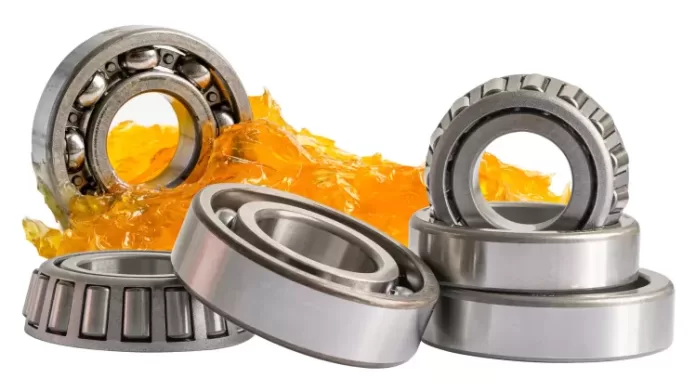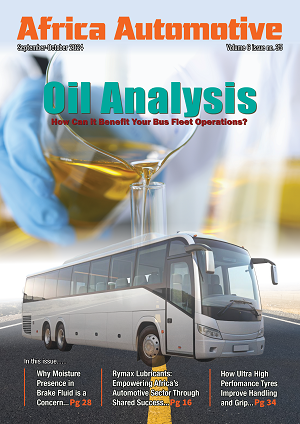When running a heavy truck fleet, you are juggling schedules, routes, maintenance and a whole lot of moving parts, and keeping those parts moving smoothly. Heavy trucks operate in demanding conditions; extreme temperatures, heavy loads, high speeds, and varied terrains particularly in Africa, all contribute to significant stress on their numerous moving parts.

“Choosing the right grease for heavy-duty truck applications is critical for long-term performance and reliability,” says 77 Lubricants Commercial Director, Pieter Kruijff. According Kruijff, “One of the most common mistakes is assuming that a single “universal” grease fits all components. In reality, different parts—such as wheel bearings, chassis points, and U-joints—have unique load, temperature, and environmental requirements.”
Lubricating grease may seem like a simple commodity, however, the wrong grease can lead to premature component failure, increased downtime, and ultimately significant financial losses. Making informed decisions about your lubricating grease is crucial for maximizing uptime, minimizing maintenance costs, and ensuring the longevity of your valuable assets. Let’s look at the possible pitfalls to avoid when selecting grease for your fleet.
Pitfall #1: Ignoring Operating Conditions
This is the biggest mistake you can make as a fleet manager. Think about where your trucks operate. Are they consistently hauling heavy loads on rough terrain? Do they frequently face extreme temperatures, whether scorching heat in the summer or freezing cold in the winter? Do they operate in dusty environments or near water?
The grease you choose needs to withstand these conditions. A grease designed for high temperatures might fail spectacularly in freezing conditions, resulting in stiff components and potential damage. Conversely, a grease formulated for low temperatures might be too soft and quickly wash away under high-pressure situations. Consider extreme pressures, high speeds, and the presence of contaminants like water or dust when selecting your grease.
Pitfall #2: Sticking to “What We’ve Always Used”
Tradition isn’t always your best friend when it comes to lubrication. The trucking industry is constantly evolving, with new grease formulations offering improved performance and extended service life. Blindly sticking to a grease your fleet has always used, without considering advancements in technology and the specifics of your current operation, could be costing you money and efficiency.
Don’t be afraid to explore new options and consult with lubricant experts. They can help analyze your fleet’s operating conditions and recommend the best grease for optimal performance.
Pitfall #3: Neglecting the Importance of Proper Application
Choosing the right grease is only half the battle. Improper application can contravene the benefits of even the highest-quality lubricant. “Incorrect application either under- or over-greasing is another major pitfall,” asserts Kruijff. He continues, “Too little grease leads to friction and wear, while over-greasing can damage seals and attract contaminants. Also, grease compatibility is often overlooked. Mixing different thickener types can cause grease separation and performance failure.”
It is recommended to ensure your mechanics are properly trained in the correct greasing techniques and understand the recommended intervals for each application point. Investing in automated lubrication systems can significantly improve consistency and accuracy, reducing the risk of human error.
Pitfall #4: Focusing Solely on Price
While cost is a factor, choosing the cheapest grease is not always the most economical solution in the long run. A lower-priced grease might require more frequent applications, leading to increased labor costs and potentially more downtime for maintenance. A higher-quality grease, even if more expensive upfront, can offer extended service life, reducing the overall cost of ownership through fewer replacements and minimized downtime. Evaluate the total cost of ownership, considering factors like application frequency, downtime, and potential repairs, before making a decision.
Pitfall #5: Disregarding Manufacturer Recommendations
Always prioritize the manufacturer’s specifications when choosing grease for your fleet. Every piece of heavy-duty equipment – from axles to wheel bearings, comes with manufacturer recommendations for the type of lubricating grease to use. These recommendations are based on rigorous testing and reflect the specific design and operating parameters of the component. Ignoring these recommendations can void warranties and significantly increase the risk of premature failure.
As Kruijff recommends, “We emphasize the importance of selecting high-quality, application-specific greases formulated to meet OEM and extreme operating conditions. Our heavy-duty greases are developed for superior water resistance, high load-carrying capacity, and extended lubrication intervals—critical for modern fleet efficiency.”
Pitfall #6: Failing to Regularly Monitor Grease Performance
Once you’ve chosen and implemented a lubricating grease, don’t just set it and forget it. Regularly monitor the condition of the grease in your fleet’s components. Check for signs of contamination, such as water or debris, or changes in consistency.
Regular inspections can help identify potential problems early, preventing catastrophic failures and costly repairs. Implementing a proactive maintenance schedule that includes grease analysis can provide valuable insights into the performance of your chosen lubricant and help you optimize your lubrication strategy.
Navigating Your Way to Success
The seemingly small choice of grease can have a significant impact on the bottom line. As a fleet manager, it is possible to optimize your lubrication strategy, minimizing maintenance expenses and maximizing the operational efficiency of your heavy-duty trucks, by carefully considering the outlined pitfalls to avoid and ensure your fleet receives the optimal lubrication necessary for peak performance and extended lifespan.
Investing in a high-quality grease and adhering to best practices in lubrication is an investment in the long-term health and productivity of your fleet. Consulting with lubrication specialists can provide invaluable assistance in navigating the complications of grease selection and ensuring optimal performance for your fleet.




